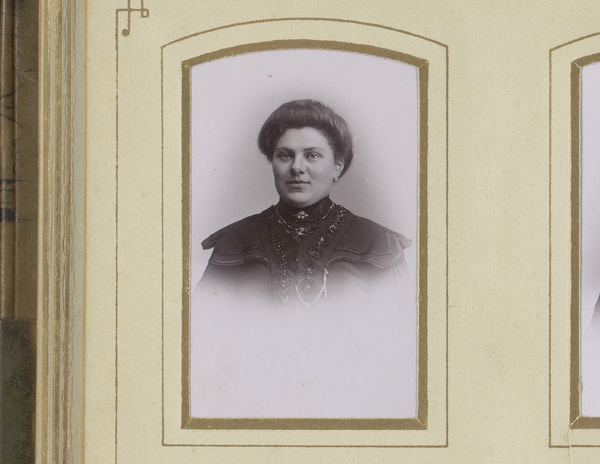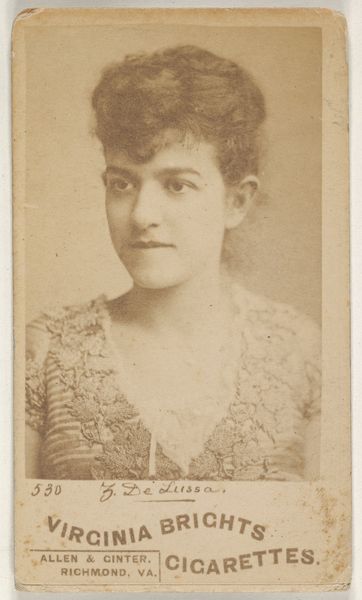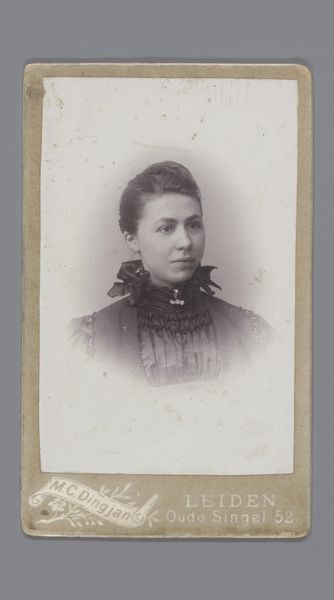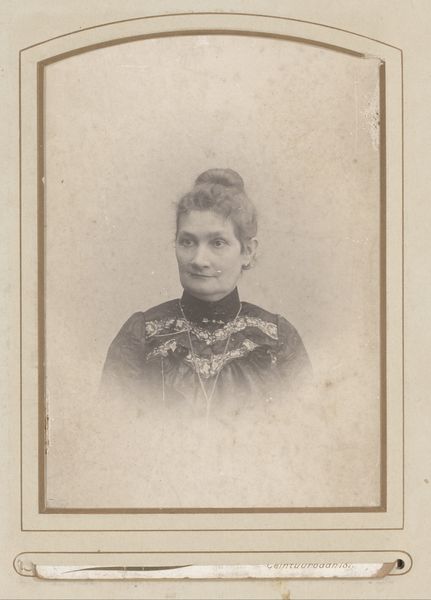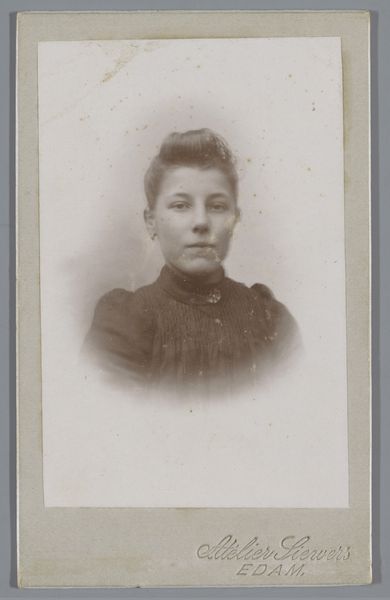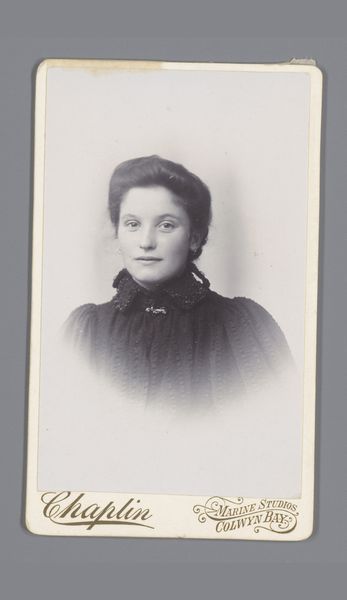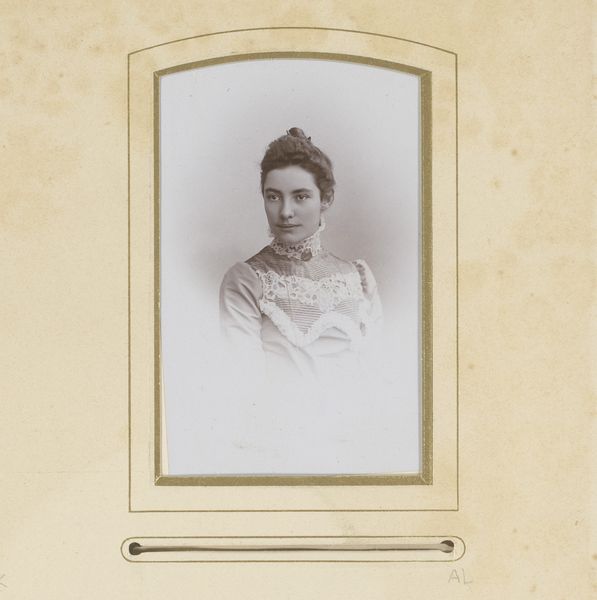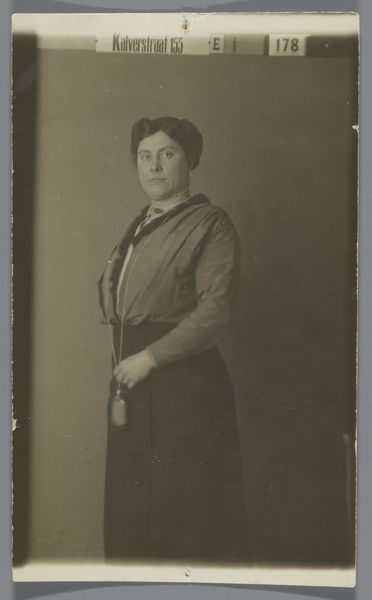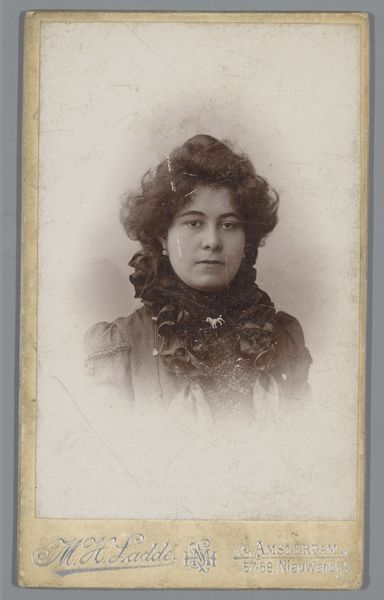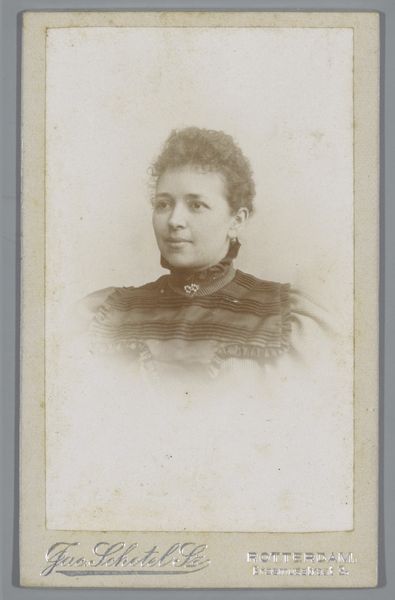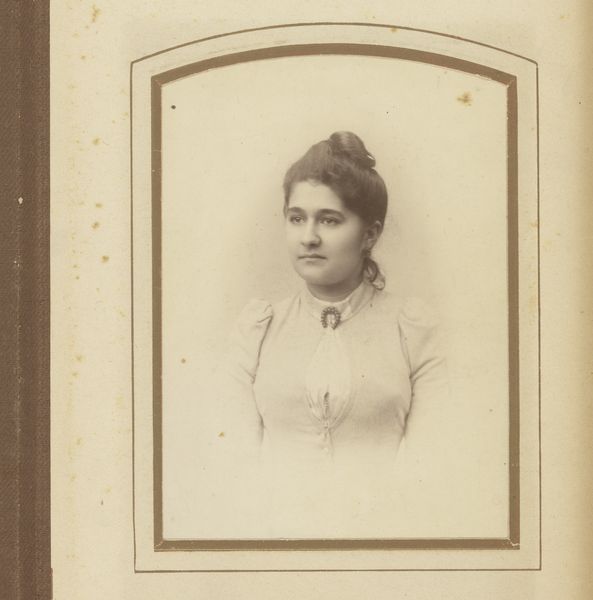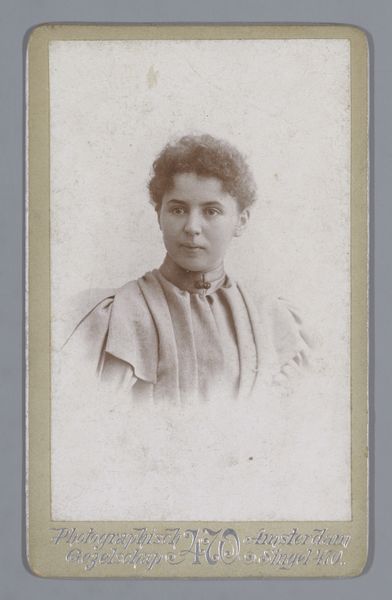
photography, gelatin-silver-print
#
portrait
#
photography
#
coloured pencil
#
gelatin-silver-print
#
watercolor
Dimensions: height 138 mm, width 98 mm
Copyright: Rijks Museum: Open Domain
Curator: Here we have "Portret van een vrouw," a gelatin-silver print believed to have been created between 1880 and 1900 by Rostaing Biechy. It's quite striking, wouldn't you say? Editor: It is. I’m immediately struck by the sitter's direct gaze. It projects a quiet strength, a refusal to be objectified, even within the conventions of late 19th-century portraiture. The monochrome and faded appearance lends to the piece an air of melancholy. Curator: The format of photography at that time definitely shaped its social function. Photographic studios democratized portraiture. But more specifically, the development of gelatin silver prints also facilitated the mass production of affordable portraits that offered broader social groups a means to capture images of their likeness. It gave many communities increased representational access and control. Editor: Precisely! How does this shift influence readings of identity, class, and power in these images? We must question how notions of ideal femininity and beauty standards impact this woman’s representation. What power dynamics exist between the photographer and his female subject? Does her fashion—the severe cut of her jacket, her restrained jewelry—reflect personal agency, societal pressure, or both? Curator: Her presentation surely also intersects with evolving societal views of women in the late 19th century. What this image can tell us about gender roles and social mobility. Does she signify the New Woman archetype? The image invites viewers to delve into prevailing ideals, constraints, and contradictions women grappled with. It also raises the issue of underrepresentation within mainstream portraiture and photography. Who gets to shape narratives of identity? What other women were purposefully marginalized during that era and whose perspectives are now being uplifted? Editor: An extremely crucial point, as photographic portraiture certainly was not a neutral form of record. Curator: What's left lingering for me is an understanding of its wider social impact: that is, the photographic portrait becoming increasingly vital as evidence to trace histories and give the voiceless an audience and visibility. Editor: Absolutely. We might say this gelatin silver print urges us toward further excavation to uncover complex narratives intertwined in this seemingly formal, yet profoundly rich visual statement.
Comments
No comments
Be the first to comment and join the conversation on the ultimate creative platform.
